This post is also available in: Español (Spanish) English
Argila, llavors i codi font. Tres textos (2/3).
Presentem tres textos sobre creació col·lectiva i apropiació tecnològica escrits pel col·lectiu artístic TAG Taller d’Intangibles entre 2006 i 2012. Els recuperem com a aportacions que conviden a la reflexió i el debat sobre la tecnologia, la creació artística col·lectiva, l’autoritat de l’autoria i l’apropiació tecnològica i creativa.
El TAG Taller d’Intangibles és un col·lectiu artístic creat l’any 1996 i que, especialment en el període esmentat, va combinar la pràctica artística amb la recerca, la reflexió sobre la pròpia pràctica i la producció escrita.
El context sociopolític d’aquests textos és el de la crisi del 2008, les primaveres àrabs i els moviments del 15M i Occupy; és posterior al moviment contra les guerres del Golf, a les primeres onades del net.art experimental, l’emergència dels sistemes wiki, la web 2.0 i les plataformes «col·laboratives».
Aquest segon text es proposa qüestionar el principi d’autoritat que s’exerceix des de l’autoria o des del coneixement expert sobre les tecnologies que utilitzem col·lectivament, explorant la possibilitat d’un sistema de creació col·lectiva radicalment modelable, com un bloc d’argila, on tothom pugui ser-ne administrador amb la mínima corba d’aprenentatge i amb una robustesa raonable que no n’aturi el funcionament.
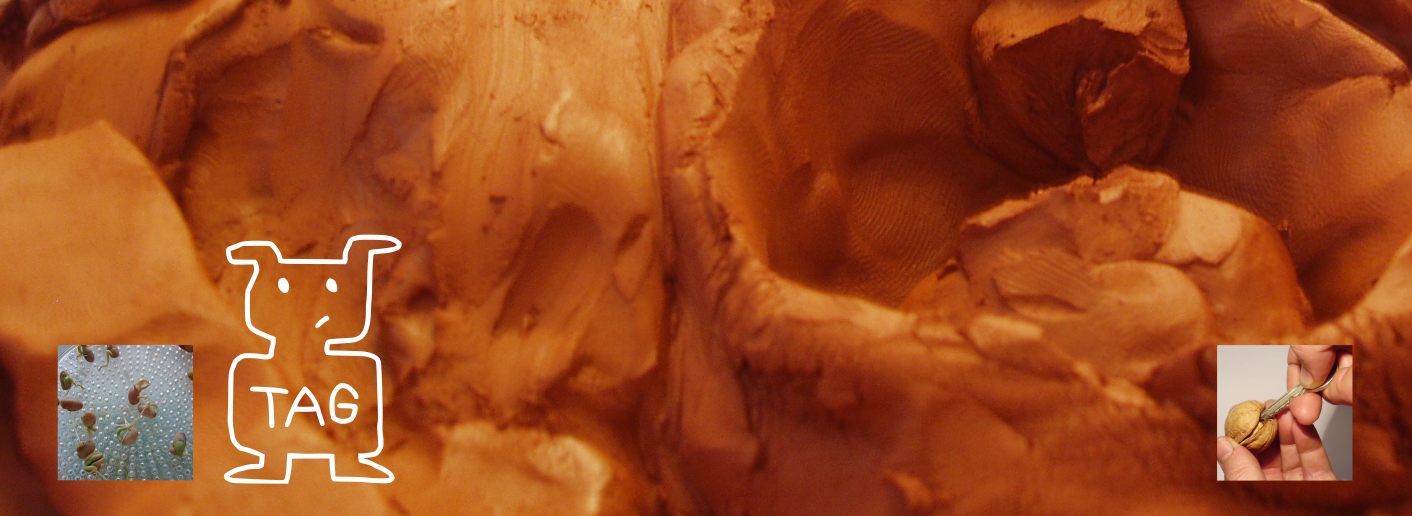
Argila, una invitació a enfangar-se
Repensar els sistemes de creació col·lectiva en xarxa
Jaume Ferrer Rosera i David Gómez Fontanills. Novembre 2006. TAG Taller d’Intangibles · enlloc.net.
Versió 1.2 – 2021 · Llicència: Creative Commons 3.0 Atribució Compartir Igual
Publicat originàriament com a ponència al «Congrés de la Cibersocietat»
Presentació
La proposta “Argila” sorgeix del projecte Germinador. L’octubre del 2005, des del TAG Taller d’Intangibles, vam posar en marxa un projecte per recollir i generar propostes de creació col·lectiva en xarxa.
És una proposta teòrica destinada a estimular el debat entorn dels sistemes de creació col·lectiva en xarxa. Hem imaginat un sistema online hipotètic i l’hem contrastat amb una metàfora analògica per tal de visualitzar més clarament els reptes que planteja. Proposem partir d’aquests reptes per revisar d’una forma crítica alguns entorns de creació existents i també per usar-los com a punt de partida per generar nous sistemes.
“Argila” planteja la possibilitat de crear un sistema multiusuari online orientat a la creació col·lectiva que reuneixi les següents característiques:
- Que pugui ser reprogramat mentre és usat
- Que la programació sigui fàcil per a qualsevol participant
- Que sigui robust malgrat els canvis
- Que sigui distribuït per garantir un control descentralitzat
El propòsit d’aquest plantejament no és tant aconseguir un disseny com obrir un debat que ens permeti qüestionar el principi d’autoritat que s’exerceix des de l’autoria o des del coneixement expert sobre les tecnologies que utilitzem col·lectivament.
El fet que la creació en xarxa es doni dins d’uns entorns de treball tecnològicament mediats planteja l’existència d’una finalitat i d’unes condicions que són prèvies a l’experiència estètica dels participants. Això dibuixa un model lineal segons el qual primer l’autor (artista, programador, dissenyador…) defineix les condicions d’experiència i després els participants interaccionen sota aquestes condicions. Tot i que la interacció entre els participants pot fer emergir propietats del sistema no previstes per l’autor, l’experiència es desenvolupa en línies generals segons els límits fixats pel mateix disseny. Aquests entorns són lineals en el sentit que impliquen un abans i un després, i aquesta linealitat es tradueix en una capacitat de control desigual sobre l’experiència. Algú prefixa uns límits que els participants no poden modificar posteriorment.
¿Seria possible dissenyar un entorn de treball que els participants poguessin modificar durant el seu ús, alterant completament la seva finalitat i regles, de manera que esdevinguessin coautors no només de l’experiència estètica que implica la seva utilització sinó també de la que suposa reprogramar el propi entorn de treball? Un entorn així es podria anomenar no lineal perquè no hi hauria un abans i un després, sinó que els moments de definició de les condicions d’ús i la mateixa aplicació d’aquestes condicions es podrien produir en el mateix instant, i perquè els participants prendrien el control del sistema, inclosa la seva finalitat. S’assemblaria a un procés biològic, perquè estaria dissenyat de manera que el seu propi metabolisme, la interacció entre els participants, l’acabés alterant completament i el fes evolucionar vers un entorn diferent, d’una forma imprevisible, però al mateix temps assegurant que continués sent un entorn de treball entre diversos usuaris.
Metafòricament podríem parlar d’un entorn que és com l’argila, que es pot modelar i pot prendre qualsevol forma, i que si es torna a la pastera, es pot reciclar i pot tornar a ser modelat per altres persones i amb altres finalitats. Aquest article es proposa apuntar algunes qüestions bàsiques sobre les característiques que hauria d’oferir un “entorn d’argila” i sobre les línies de discussió que una proposta com aquesta pot encetar.
Context: el germinador
Hem estat fent una tasca d’identificació de sistemes, pràctiques i processos, que procurem descriure mostrant les semblances i diferències entre ells. Aquest treball de recopilació també serveix per proposar variants o generar propostes noves.
D’aquest treball amb les propostes sorgeix la reflexió que potser caldria tenir en compte, no només les condicions de l’experiència sinó també qui o quins factors defineixen aquestes condicions. A partir d’aquesta línia de pensament s’arriba al plantejament d’una proposta on la definició de les condicions formi part d’allò que pot ser canviat. I així sorgeix “Argila” com a proposta teòrica per impulsar aquest debat.
Començarem descrivint alguns models que ens serviran com a contrast amb el model proposat per després repassar un a un els quatre reptes plantejats en la proposta. Explicarem les experiències basades en l’ús d’un bloc de fang per explorar la relació amb la metàfora i finalment mirarem de justificar quin sentit té fer una proposta com aquesta i quines vies de discussió pot obrir.
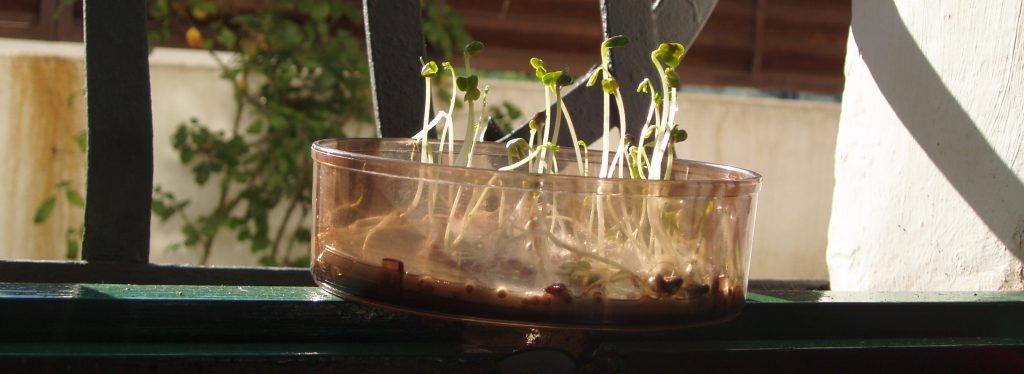
Contrast: obra oberta, sistema tancat
 Sembla una paradoxa, però algunes de les propostes que faciliten els recursos i les condicions per crear col·lectivament a internet no solen facilitar que els participants puguin canviar aquestes condicions.
Sembla una paradoxa, però algunes de les propostes que faciliten els recursos i les condicions per crear col·lectivament a internet no solen facilitar que els participants puguin canviar aquestes condicions.
Aquest és el cas d’alguns treballs de net.art, els quals seguirien un model on els participants gaudeixen d’una experiència que està limitada per unes condicions imposades prèviament per un artista-programador. Qui crea el sistema, sigui un individu o un col·lectiu, ocupa una posició que no poden assolir la resta de participants.
La versió forta d’aquest model la constituiria el conjunt de casos on el software vinculat al sistema i altres elements creats per proporcionar l’experiència es mantenen sota una llicència que en restringeix l’ús i n’impedeix la modificació per part de tercers sense el permís dels autors. La versió feble estaria representada per aquells casos on el sistema és software lliure i/o els altres elements necessaris es posen a disposició sota una llicència copyleft que permet distribuir-los i modificar-los lliurement. Suposadament els participants podrien clonar el sistema en un altre servidor i modificar-lo. Però aquest tampoc és el model que proposa “Argila” on, com veurem amb més detall més endavant, es busca eliminar la necessitat de replicar el programa o de crear línies alternatives de desenvolupament.
Contrast: capes de ceba
 Els projectes més importants de desenvolupament de software lliure ens ofereixen un altre model on hi ha un gran grup de participants en l’experiència i un grup més petit de desenvolupadors del sistema. Persones del primer grup poden passar al segon, tot i que el pas pot estar dificultat per normes socials o pel nivell de coneixements
Els projectes més importants de desenvolupament de software lliure ens ofereixen un altre model on hi ha un gran grup de participants en l’experiència i un grup més petit de desenvolupadors del sistema. Persones del primer grup poden passar al segon, tot i que el pas pot estar dificultat per normes socials o pel nivell de coneixements
Alguns processos de desenvolupament comunitari de software lliure s’han descrit utilitzant la metàfora de les capes de ceba. Segons aquest model hi ha diferents “capes” o nivells d’implicació en el desenvolupament d’un software, des d’una capa externa amb molts usuaris que simplement l’utilitzen i, potser, reporten a alguns errors, a un nucli central format per un (el maintainer) o pocs usuaris que decideixen la incorporació d’aportacions, les línies de desenvolupament i coordinen les tasques a fer. Entremig hi ha diversos graus de contribució i compromís amb el projecte. En el model de capes de ceba teòricament qualsevol persona pot passar d’una capa a l’altra. El fet d’anar entrant cap a l’interior pot dependre de normes d’elecció i/o reconeixement social, del nivell de coneixements o la capacitat per adquirir-los i de la disponibilitat que cadascú pot destinar. Aquest esquema s’ha utilitzat per descriure projectes com el desenvolupament del kernel de Linux, la distribució Debian o el software de servidor Apache (VAN WENDEL DE JOODE et alt., 2003).
El model de les capes de ceba és segurament una bona manera d’organitzar la producció de software optimitzant els esforços i establint una bona comunicació entre usuaris i programadors alhora que assenta les bases per la incorporació escalonada de nous desenvolupadors i garanteix la continuïtat del projecte. Però l’experiment que proposem fer amb “Argila” és buscar un model on tots els usuaris que participen en l’experiència de creació col·lectiva siguin (o puguin ser fàcilment) desenvolupadors o transformadors potencials de les condicions d’aquesta experiència. Això implicaria una corba d’aprenentatge curta, tant en la manera de participar en la creació col·lectiva com en els coneixements per modificar el software.
Contrast: troncs i branques
![]() En garantir l’accés al codi font i la llibertat per modificar-lo, el software lliure fa possible que una persona, grup o organització prengui el programa i en desenvolupi una versió diferent. Però a la pràctica en els principals projectes de desenvolupament hi ha una evolució conjunta del software en un sol “tronc” al qual es van incorporant les millores seguint el model de les capes de ceba. Successivament es van publicant noves versions que corregeixen errors o incorporen noves funcionalitats.
En garantir l’accés al codi font i la llibertat per modificar-lo, el software lliure fa possible que una persona, grup o organització prengui el programa i en desenvolupi una versió diferent. Però a la pràctica en els principals projectes de desenvolupament hi ha una evolució conjunta del software en un sol “tronc” al qual es van incorporant les millores seguint el model de les capes de ceba. Successivament es van publicant noves versions que corregeixen errors o incorporen noves funcionalitats.
Sempre és possible clonar el programa i desenvolupar-lo en una línia diferent a la que s’està seguint. D’això se’n diu un fork i no es dona gaire sovint. Com que l’objectiu és fer un bon programa, crear forks equival a dispersar els esforços de la comunitat. Normalment es crea quan hi ha un conflicte dins d’aquesta que no troba solució. La nova línia de desenvolupament aspira a substituir l’antiga i en la majoria de casos una substitueix l’altra. Un cas menys conflictiu seria quan un sistema molt complex amb múltiples funcionalitats es decideix dividir en diversos projectes, cadascun dels quals potenciarà algun dels seus aspectes.
La possibilitat de fer forks, en un moment donat, és un mecanisme de resolució de conflictes i una garantia per evitar les temptacions de monopolització o d’apropiació excessiva dels projectes. Però amb la proposta Argila no estem pensant ni en un sistema en versions, ni amb ramificacions, sinó en un sistema que evoluciona de manera fluida sense deixar de funcionar.
Repte: un sistema reprogramat mentre és usat
Amb “Argila” es proposa que les modificacions es facin “en viu”, que es reprogrami el software mentre és utilitzat online i que no calgui clonar-lo per fer modificacions. La idea sobre com evoluciona el software seria més pròxima a com es modifica el text d’un wiki que a com es modifica un programa a partir de diferents versions que es van publicant com a beta o release. La diferència respecte a escriure en un wiki seria que el fet d’intervenir-hi podria modificar no només l’estructura dels continguts sinó la funcionalitat bàsica del mateix sistema com a eina fins al punt de poder convertir-la en una eina completament diferent. Existeixen entorns de programació com Emacs que admeten reprogramació, però el repte aquí és aconseguir la reprogramació online durant el mateix ús del sistema, és a dir, mentre altres usuaris l’estan usant.
Repte: un sistema fàcil de reprogramar
A més es planteja un escenari on els participants en l’experiència passen a modificar al programa amb facilitat, desapareixent la idea d’un nucli estable de desenvolupadors. No hi hauria d’haver una diferència significativa entre el nombre d’usuaris que participen de l’experiència de creació col·lectiva i aquells qui modifiquen i fan evolucionar el software. De fet, la idea és que potencialment tots els usuaris són participants i desenvolupadors; la corba d’aprenentatge per fer servir el software o per modificar-lo és curta i equiparable.
Tradicionalment s’ha intentat facilitar l’accés als coneixements necessaris per programar de diverses maneres: amb llenguatges de programació que es puguin usar de forma semblant al llenguatge humà (com ara SmallTalk); formes de scripting especialitzades dins d’eines d’autor (com ara Lingo dins de Director o ActionScript dins de Flash), o sistemes de tags i de programació propis d’alguns wikis (com ara el que proporciona Mediawiki); assistents basats en l’ús de formularis per evitar haver d’escriure codi font; o entorns de programació de llenguatges de propòsit general que permeten usar una codificació més compacta i especialitzada en tasques d’alt nivell (com ara Processing).
Totes aquestes són aproximacions a tenir en compte a l’hora de pensar un «sistema d’Argila» però també plantegen un dels reptes de la proposta i una possible paradoxa: si es simplifica la manera de programar, es podria estar creant una mena de «llenguatge d’autor» que requereix d’un nivell més baix de software treballant per sota i més difícil de reprogramar, el qual podria imposar els seus límits a la majoria d’usuaris.
Repte: un sistema robust
Un altre repte seria que l’entorn fos capaç de ser reprogramat sense perdre la funcionalitat bàsica de ser un entorn de treball col·lectiu, independentment de l’evolució de la seva finalitat i possibilitats. Caldria plantejar-se si les estratègies per aconseguir aquesta consistència impliquen la necessitat de mantenir o no certes condicions inicials en l’àmbit tecnològic o social i també de quina manera les condicions legals de distribució afecten aquest objectiu.
Els sistemes de tipus CVS (Concurrent Versions System), usats en el desenvolupament de software per poder treballar amb diferents versions; o els historials de canvis dels wikis, ens proporcionen exemples de com es pot mantenir la robustesa durant un procés de treball mitjançant el recurs de recuperar/comparar l’estat actual amb estats anteriors. Aquests mecanismes, però, plantegen una nova paradoxa: l’existència de parts del sistema que, en estar encarregades de mantenir el registre de canvis del mateix sistema, no haurien de poder ser canviades i per tant quedarien fora del control dels usuaris.
Repte: un sistema distribuït
Si l’entorn es manté en el mateix servidor d’on ha sorgit, es produeix una dependència vers l’administrador d’aquest servidor (que directament o indirectament podria ser el dissenyador o artista que ostenta la posició d’autor, el maintainer o el web-master). Caldria trobar la forma de distribuir-lo en diversos servidors, o que qualsevol usuari pogués servir i administrar parcialment o totalment el software des de la seva pròpia màquina. Les xarxes de tipus P2P, la forma de funcionar d’alguns netbots [i els sistemes basats en blockchain] són referents a tenir en compte.
Metàfora feta realitat: argila analògica
La reflexió i les discussions entorn de la proposta Argila ens portaven contínuament al referent de la metàfora i vam pensar que seria interessant fer una experiència de creació col·lectiva amb argila de veritat, el fang, l’argila “analògica”. Així va sorgir “Argila entre mans”. En el moment d’escriure aquest article hem experimentat “Argila entre mans” en dos contextos ben diferents, un festival d’art i una trobada de hackers. Ambdues experiències van tenir lloc durant el 2006. La primera es va dur a terme com a part de les activitats del GERMINADOR@lloc, al Festival Maçart, que cada any es celebra a Maçanet de Cabrenys. L’experiència es va repetir durant el Hackmeeting, la trobada entorn del software lliure, el coneixement obert i l’escena dels hacklabs de tot l’estat espanyol, que a 2006 va tenir lloc a Mataró sota el nom de Hackiluro.
Durant un temps determinat (en ambdós casos van ser 3 dies) vam disposar un gran bloc d’argila sobre una taula en un espai amb certa concurrència d’assistents als mencionats esdeveniments. Vam convidar la gent a participar en una obra col·lectiva en evolució modelant la peça de fang. Els proposàvem intervenir lliurement, modificant o transformant, si volien, el que havien fet els participants precedents. Només els demanàvem que no s’enduguessin fang de la peça, a part d’això teníem cura de mantenir el fang humit, perquè no s’assequés.
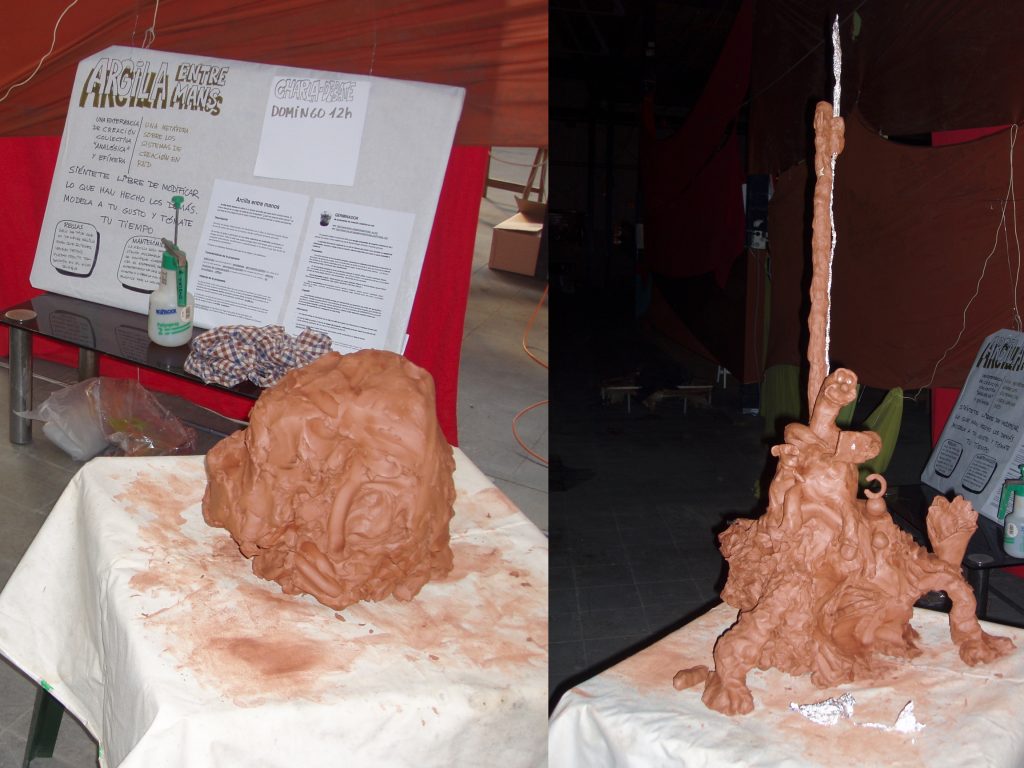
Esprement la metàfora
Analitzar «Argila entre mans» com a sistema ens pot ajudar a entendre els elements clau de la proposta teòrica que plantegem amb «Argila», i també ens ajuda a extreure elements que siguin útils en futures propostes de creació col·lectiva. «Argila entre mans» es fonamenta en sis principis bàsics:
1. Plasticitat: es basa en una propietat física, no en una regla social, segons la qual si l’argila disposa de l’aigua suficient, manté la plasticitat i es pot modelar.
2. No disgregació: una regla social que consisteix en el fet que els usuaris no haurien d’emportar-se fragments, es tracta de conservar el bloc sencer.
3. Manteniment mínim: si la ruixem de tant en tant per mantenir el seu nivell d’humitat, l’argila conserva la capacitat de respondre a les pressions dels usuaris i deformar-se, ser acumulada, ser pastada… però si deixem que s’assequi perd la plasticitat i esdevé rígida, aleshores els usuaris ja no poden seguir treballant-hi. En cas de sostracció requeriria que algú hi afegís més argila.
4. Resistència: un cop assecada del tot, si l’argila se submergís en aigua prou temps, podria tornar a recuperar la seva plasticitat (sempre que no es cogués al forn). També es podria recuperar d’una sostracció afegint nova argila.
5. No especialització: treballar sobre el bloc o tenir cura del seu manteniment no requereix coneixements especialitzats, qualsevol usuari pot fer-ho. Evidentment, qui disposi d’experiència prèvia modelant en pot treure més partit i potser pot arribar a resultats més controlats, però en principi tothom, disposi d’experiència o no, pot realitzar aportacions significatives de qualsevol abast.
6: Instruccions mínimes: en principi només cal informar a l’usuari sobre la necessitat de complir el principi 2 i sobre com realitzar el manteniment (principi 3).
Què fan els usuaris de l’”Argila entre mans”?:
Modifiquen la forma total o parcial del bloc.
- No poden alterar substancialment els principis de l’aplicació, tret del 2 (infringir la regla de conservar el bloc sencer)
- Tot i que a les experiències realitzades no va ser així, en principi qualsevol usuari hagués pogut encarregar-se del manteniment (humitejant l’argila si notava que estava massa seca o reintroduint argila si aquesta fos disgregada).
- Els usuaris interactuen amb altres usuaris:
- Directament parlant o gesticulant mentre treballen al bloc d’argila
- Indirectament treballant a partir de la modificació que han introduït altres usuaris
Observant els principis i les possibilitats d’acció dels usuaris, es poden extreure algunes conclusions respecte als límits del sistema:
- Aparentment, l’”Argila entre mans” no és substancialment diferent de qualsevol altre sistema de creació conjunta dels que hem tingut ocasió d’estudiar (GÓMEZ, 2004)(FERRER, 2004), en el sentit que els usuaris segueixen sense poder alterar els principis de l’aplicació, sempre que la utilitzin de forma convencional. La diferència important és que el sistema és tan robust (principi 4) i el seu manteniment requereix tan poca especialització (principi 5) que qualsevol usuari pot assumir el rol d’administrador del sistema.
- Presenta dos punts febles, però. Els principis 2 (no disgregació) i 3 (manteniment mínim) són regles socials que poden ser infringides, fet que si no fos compensat per algun usuari que n’assumís l’administració podria fer que el sistema deixés d’estar orientat a la creació conjunta. Ara bé, es tractaria només d’una situació provisional. A diferència d’altres sistemes, a l’”Argila entre mans” fins i tot després d’un període de no administració (assecament o disgregació) qualsevol usuari podria recuperar el sistema simplement afegint més argila o pastant-la de nou. No es requeriria la intervenció dels creadors originals de la proposta, sempre que es conservés la documentació (principi 6) o bé aquesta pogués ser reconstruïda per la memòria d’alguns participants.
- L’aspecte més interessant és que permet canviar alguns principis bàsics que són fonamentals, concretament el de la plasticitat (1) i el de la documentació que explica com usar i com mantenir l’argila (6), malgrat que per fer-ho cal usar el sistema de forma no convencional.
- Es poden alterar les propietats físiques de l’argila coent-la o barrejant-la amb altres substàncies que canviïn la seva plasticitat (o que n’impossibilitin aprofitar-la, per exemple si algú hagués tingut la mala idea d’encastar-hi agulles o trossos de vidre). Sortosament, el forn necessari per coure l’argila o els additius són recursos que no estaven a l’abast de la majoria d’usuaris. Al Hackiluro alguns usuaris van començar a usar un pal com a eina de modelat que finalment va acabar sent incorporada com a estructura interna damunt de la qual el bloc d’argila va assolir una forma que hagués estat impossible aconseguir amb argila sola.
- Es pot destruir o alterar la documentació modificant/incloent noves normes o eliminant el principi 2 (no disgregació). En aquest cas n’hi hauria prou amb reescriure el cartellet que acompanya el bloc o simplement eliminar-lo. Aquesta situació no es va produir. La manca d’informalitat probablement obeeix a raons diverses, però possiblement el context dels dos esdeveniments on vam realitzar l’experiència i el fet que des del TAG assumíssim el manteniment del bloc van ser factors condicionants. Al Hackiluro es van crear dinàmiques paral·leles on alguns participants van col·laborar activament en el muntatge i supervisió d’un sistema de captura que anava acumulant imatges dels canvis que experimentava el bloc al llarg dels tres dies. En certa manera la documentació original del sistema va ser expandida notablement.
Aproximació conservadora i aproximació radical
Una de les qüestions que “Argila” fa emergir amb força està relacionada amb la fortalesa del sistema.”Argila entre mans” garanteix de forma raonable (per bé que no absoluta) que el sistema continuï funcionant, malgrat que l’ús no convencional és l’única via de què disposa l’usuari per participar en la redefinició de les condicions generals de l’experiència d’ús.
En un sistema basat en software es podria establir el símil del fet que la capacitat de reprogramació correspon a la plasticitat del sistema; mentre que la documentació té un equivalent en la documentació electrònica (explicacions, instruccions, rètols…), allò que manté la finalitat i forma d’ús del sistema i sobretot que n’evita la sostracció mantenint lliure el codi (condicions de distribució). Això ens permet definir dues formes d’aproximació al problema que planteja “Argila”, una de conservadora i una altra de radical.
Una aproximació conservadora implicaria que la mateixa plasticitat (capacitat de reprogramar) i la documentació del sistema (finalitat i distribució) han de romandre protegides, per tal de garantir que efectivament el sistema admeti la reprogramació i el sentit de creació conjunta (lliure) passi el que passi. Però això ens acosta a la idea de “sorral”. Tothom pot fer i desfer dins del sorral, però no pot alterar els principis del sorral. És el model de projectes de creació conjunta com la Wikipedia. En aquest sentit, “Argila” només introduiria la diferència que no s’orientaria a continguts sinó a comportaments reprogramables, però treballaríem dins d’un entorn predefinit i protegit. En aquest cas el repte rauria a aconseguir complir el principi 5 (no requerir coneixements especialitzats perquè estigui a l’abast de tothom).
Una aproximació radical a “Argila” implicaria permetre als usuaris actuar sobre la mateixa plasticitat del sistema (capacitat de reprogramar) i sobre la documentació (finalitat i distribució). Tenint en compte el principi 5 de no especialització, s’estaria convidant explícitament l’usuari a actuar de forma no convencional, per tant, en un context de software online, ¿com podria “Argila” continuar sent “Argila”, és a dir, sent reprogramable i/o no propietària? Aquest no és un debat nou, els wikis han demostrat fortalesa malgrat l’aparent feblesa que suposa l’accés il·limitat a l’edició de continguts (GÓMEZ, 2005). Caldria veure fins a quin punt es podria assegurar la fortalesa quan és el mateix codi el que resta accessible.
És fàcil imaginar-se altres qüestions, com ara, ¿què aporta una aproximació conservadora i què aporta una aproximació radical? És possible una via intermèdia? ¿És possible, no ja tècnicament sinó teòricament, una aproximació radical que superi l’aparent paradoxa que suposa facilitar/promoure usos no convencionals i al mateix temps pretendre que es mantingui la consistència del sistema d’acord amb la proposta original?
“Argila” com a eina d’estudi
Sense ànim d’arribar a conclusions definitives, atès que la recerca continua oberta, recuperem aquí la finalitat d’“Argila”. Començàvem aquest article dient que es tractava d’una proposta teòrica, l’objectiu de la qual era servir d’estímul al debat. Ens ajuda també a constatar les possibilitats que ofereix, en el camp de la creació col·lectiva online, un mètode basat en la formulació de propostes teòriques com a complement de la recerca experimental:
- Facilita prendre consciència dels diferents models que existeixen.
- Facilita identificar les característiques dels sistemes.
- Ens ajuda a fer visible els substrats ideològics i/o polítics a les tecnologies.
- Propicia el debat sobre l’apropiació de les tecnologies i sobre l’actitud que prenem en relació amb aquestes.
- Propicia el debat sobre l’autonomia de la societat civil en el desenvolupament tecnològic.
- Propicia el debat sobre la fractura digital per raons de coneixements i el vell debat sobre l’accés als coneixements tècnics i l’exercici del poder en relació a aquests.
Amb “Argila” pretenem contribuir a revisar de forma crítica els sistemes existents però també a imaginar-ne de nous. Creiem que l’intent de resoldre els reptes plantejats pot fer visibles algunes propostes i sistemes que parcialment ja els resolen, alhora que pot ser el punt de partida de noves propostes que aportin noves solucions. Per tant, es planteja com una eina d’anàlisi orientada a l’estudi i a la producció en el camp de la creació col·lectiva online.
![]()
Debat sobre aquest text a la categoria
“Artec” de l’Àgora de CommonsCloud
(per participar al debat registra’t abans)
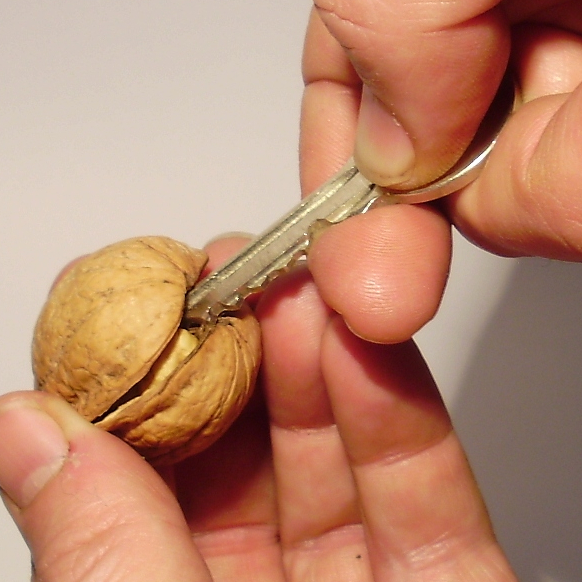
Següent text de la sèrie: Creació col·lectiva i apropiació tecnològica
Data prevista de publicació: 13 de desembre de 2021.
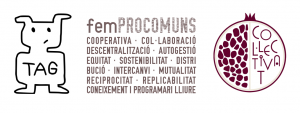
Publicació conjunta
Aquest text es publica simulàniament a les webs de les cooperatives
femProcomuns i Col·lectivaT
Amb el suport de l’Institut Ramon Llull
Si vols republicar-los en qualsevol de les llengües en que està o traduir-lo a altres llengües, posa’t en contacte amb nosaltres.
Bibliografia
- VAN WENDEL DE JOODE, R. BRUIJN, J.A. VAN EETEN, M. J. G., 2003, Protecting the Virtual Commons: Self-Organizing Open Source Communities and Innovative Intellectual Property Regimes, The Hague: Asser Press, versió en línia (Digital Library of the Commons) http://dlc.dlib.indiana.edu/documents/dir0/00/00/10/75/
- GÓMEZ, David, 2004, Sistemes de creació col.lectiva en xarxa: cooperació i conflicte; regles formals i informals
- GÓMEZ, David, 2005, “Wikipedia, un projecte comunitari en xarxa”, a COL·LECTIU INVESTIGACIÓ, Recerca activista i moviments socials, Barcelona: El Viejo Topo.
- FERRER, Jaume, 2004, Sistemes cooperatius i de creació col.lectiva en xarxa: conflicte, competència i cooperació entre persones, eines automatitzades i agents de software.

